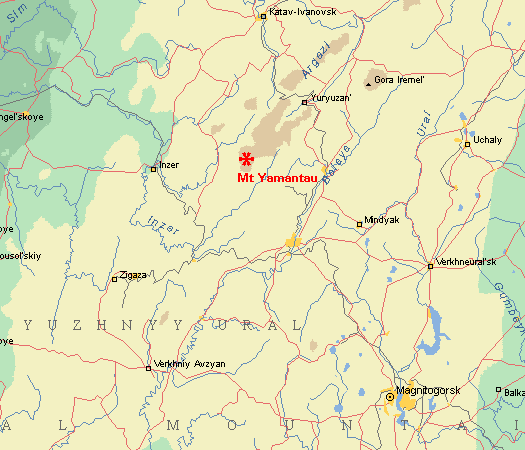|
|
|||
|
Beloretsk, Russia ..
Yamantau
|
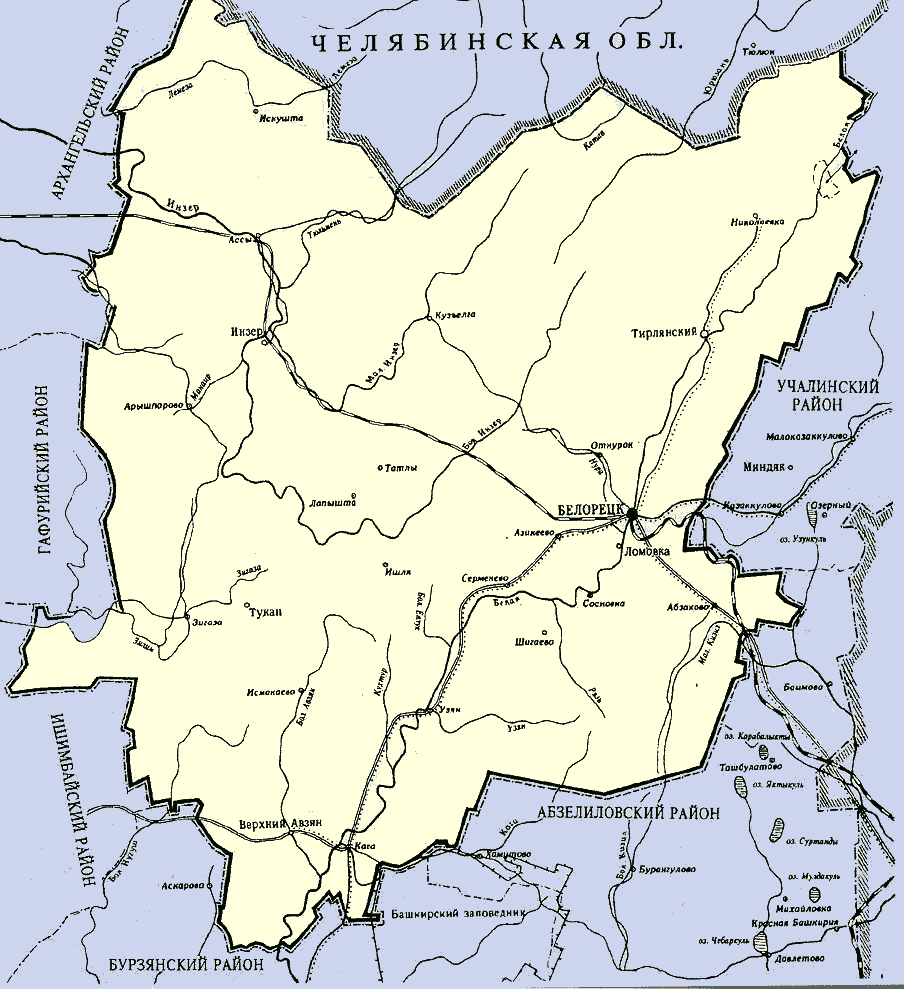 |
Starting in the Brezhnev period, Russia has been pursuing construction of a massive underground facility at Yamantau Mountain and the city of Mezhgorye (formerly the settlements of Beloretsk-15 and Beloretsk-16). The complex, reportedly being built by tens of thousands of workers, is said to cover an area of up to 400 square miles, the size of the Washington area inside the Beltway.
The exact location of this large facility is uncertain, and given its reported size it may span as much as an entire degree of latitude and longitude. It is apparently located near the the Zlatoust-36/Yuryuzan nuclear weapons production plant and the Yuryuzan national-level nuclear weapons storage facility. The Yaman-Tau Gory [mountains] range is centered at 52°25'N 56°45'E, while the peak of Yamantau Gora [mountain] is at 54°15'19"N 58°06'11"E. The town of Beloretsk is located at 53°58'N 58°24'E, though NIMA does not include a listing for Mezhgorye. This facility may be synonymous with "Alkino-2" since the town of Al'kino is nearby at 55°05'N 58°04'E.
On April 16, 1996, the New York Times reported on a mysterious military base being constructed in Russia: "In a secret project reminiscent of the chilliest days of the Cold War, Russia is building a mammoth underground military complex in the Ural Mountains, Western officials and Russian witnesses say. Hidden inside Yamantau mountain in the Beloretsk area of the southern Urals, the project involved the creation of a huge complex, served by a railroad, a highway, and thousands of workers."
The New York Times quoted Russian officials describing the underground compound variously as a mining site, a repository for Russian treasures, a food storage area, and a bunker for Russia's leaders in case of nuclear war. "The (Russian) Defense Ministry declined to say whether Parliament has been informed about the details of the project, like its purpose and cost, saying only that it receives necessary military information," according to the New York Times.
Satellite photographs of Yamantau Mountain show continued digging at the "deep undergound complex" and new construction at each of the site's above-ground support areas. Judging from satellite photos and other intelligence, US officials are fairly confident that the Russians are building an underground command bunker and communications installation. But "... the Russians are not very interested in having us go in there," a senior American official said in Washington. "It is being built on a huge scale and involves a major investment of resources. The investments are being made at a time when the Russians are complaining they do not have the resources to do things pertaining to arms control."
Aviation Week and Space Technology reported that "The huge underground complex being built there has been the object of U.S. interest since 1992. 'We don't know exactly what it is,' says Ashton Carter, the Pentagon's international security mogul. The facility is not operational, and the Russians have offered 'nonspecific reassurances' that it poses no threat to the U.S." Russia's 1997 federal budget lists the project as a closed territory containing installations of the Ministry of Defense.
Leonid Akimovich Tsirkunov, commandant of Beloretsk-15 and Beloretsk-16, stated in 1991 and 1992 that the purpose of the construction there was to build a mining and ore-processing complex, but later claimed that it was an underground warehouse for food and clothing. And then Commander-in-Chief of the Strategic Rocket Forces General Igor Sergeyev denied that the facility was associated with nuclear forces. M.Z. Shakiorov, a former communist official in the region, alleged in 1992 that the Yamantau Mountain facility was to become a shelter for the Russian national leadership in case of nuclear war. Sources of the Segodnya newspaper in 1996 claimed that the Yamantau Mountain project was associated with the so-called `Dead Hand' nuclear retaliatory command and control system for strategic missiles.
According to one recent account "We Keep Building Nukes For All the Wrong Reasons", By Bruce G. Blair, The Washington Post Sunday, May 25, 2003; Page B01"... the Yamantau and Kosvinsky mountains in the central and southern Urals ... were huge construction projects begun in the late 1970s, when U.S. nuclear firepower took special aim at the Communist Party's leadership complex. Fearing a decapitating strike, the Soviets sent tens of thousands of workers to these remote sites, where U.S. spy satellites spotted them still toiling away in the late 1990s. Yamantau is expected to be operating soon. According to diagrams and notes given to me in the late 1990s by SAC senior officers, the Yamantau command center is inside a rock quartz mountain, about 3,000 feet straight down from the summit. It is a wartime relocation facility for the top Russian political leadership. It is more a shelter than a command post, because the facility's communications links are relatively fragile. As it turned out, the quartz interferes with radio signals broadcast from inside the mountain. Therefore the main communications links are either cable or radio transmitters that broadcast from outside the center."
Beloretsk is a center of Beloretsk region of Bashkortostan. It is situated on the cross of Belaya River and Magnitogorsk-Beloretsk-Karloman rail-road. It is 264 km. far from Ufa and 105 km. far from Magnitogorsk. The population was 73600 of people in 1995 ( 19900 in 1926, 59300 in 1959, 72400 in 1989). One of the oldest minig and metalurgical centers of South Ural appeared because of construction of the metallurgical works. Before The First World War narrow-gauge Zaprudovka-Beloretsk line was built. In 1923 the village Beloretskiy Zavod grew into town, in 1926 it was connected with Tukan and in 1927 with Inzer by narrow-gauge line. Wood and ore was transported from these towns to the plant. Including the plant to the field of activity of Uralo-Kuzneckiy group of enterprise was the reason of its reconstruction and its transfering to a coking coal. Town development became quicker after constructing the rail-road to Ufa (1997). The main city industry is the metallurgical works. Other plants in Beloretsk produce tools for building, springs for tractors, nails, etc. There are also woodworking industry, meat and dairy factories, plants producing bricks and ferro-concret items.
The Republic of Bashkortostan is located in the Southern part of the Urals along the line of Europe and Asia. Its area is 143,600 sq. m. As of January 1, 1995 the population of Bashkortostan was 4.097 million people. The capital is Ufa is with a population of 1.1 million residents. The republic has 54 administrative areas ("rayons") and 21 cities. Other large cities include Sterlitamak (256,000 inhabitants), Salavat (155,000), Nefetekamsk (123,000), Oktyabrsky (108,000). Representatives of 70 nations and ethnicities live in the Republic of Bashkortostan, including Russians (39.3 percent), Tatars (28.4 percent) and Bashkirs (21.9 percent). The urban population constitutes 65 percent of the total.
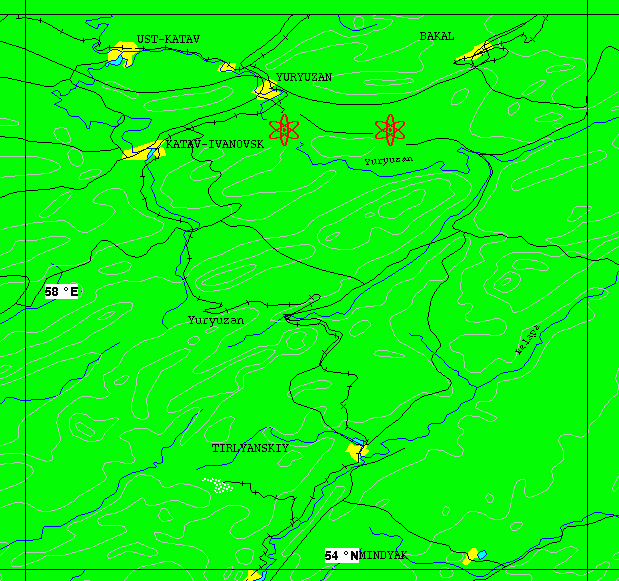 |
Sources and Methods:
- Moscow builds bunkers against nuclear attack - By Bill Gertz THE WASHINGTON TIMES 01 April 1997
- What Is That There Under the Mountain? - A. Urtsev and V. Yeldashev, BELORETSKIY RABOCHIY, 3/24/1996 -- Interview with Bashkortostan People's Deputy Leonid Akimovich Tsirkunov outlining the purpose of the facilities that are being built in the cities of Beloretsk-15 and Beloretsk-16.
- Inzer Isn't All That Bad - L. Tsirkunov, Beloretskiy Rabochiy, 9/2/1993 -- Further on Pollution at Beloretsk-15
- Returning to What Was Printed: Don't Drink Water From the Inzer! - G. Sitdikova, Beloretskiy Rabochiy, 8/7/1993 -- Biological Clean-Up Work At Beloretsk-15
- Natural Landmarks of Beloretsk Rayon - A. Dmitriyev, Beloretskiy Rabochiy, 7/22/1993 -- Geographical features of a polluted region.
- One of the Secrets of Yaman- Tau - A. Vorobyev, Beloretskiy Rabochiy, 7/13/1991 -- Essay on a 1975 reconnaissance plane crash in the Bashkortostan region in Russia.
- Contradiction of Yamantau's Status as Preserve and Facility Questioned - 7/2/1991 -- Expresses support for protecting the polluted Bashkortostan region.
- Note: Above indented links are dead, but left for article reference data
- U.S. Officials Puzzled By Big Hole Russians Are Digging - By Terry Atlas, Chicago Tribune April 17, 1996
- Update for dead link - Available for a fee from Chicago Tribune - For more than a decade, US spy satellites have kept watch on a remote spot where Russians are burrowing deep into the Ural Mountains to build a vast underground military complex capable of surviving a nuclear war. As construction continues in 1996, the project is regarded with curiosity more than concern.
- Mount Weather's Russian Twin - By Patricia Neill - Matrix Editor
- Mt. Yamantau - From the Folks who Brought you The Cold War - Decision Brief No. 96-D 37 - 16 April 1996
Related Links:
- Official website of Mezhgorye - in Russian
- FAS.org Articles
- Moscow Builds Bunkers against Nuclear Attack - FAS.org - from The Washington Times, 1/Apr/97
- Sense of Congress on Need for Russian Openness on the Yamantau Mountain Project - (House of Representatives - June 19, 1997)
- General Denies Nuclear Construction in Urals - INTERFAX, 4/18/1996 - The commander of Russia's missile forces has denied allegations that an underground anti-nuclear bunker is under construction outside the city of Beloretsk in Bashkortostan near the Yamantau Mountain.
- Inside Russia's Magic Mountain
- Yamantau Mountain Complex - A Future Armageddon?
- Mount Yamantaw - Wikipedia
- What's going on in the Yamantau mountain complex?
- The Return of the Doomsday Machine?
- Russian Nuclear Issues
- Bellona.org Articles
- Russian government denies to high court it plans to build nuclear plant that is already approved for construction
- Fate of Southern Urals Nuclear Power Plant to be decided in Russia Supreme Court
- 1996 Russia Special Weapons Nuclear, Biological, Chemical and Missile Proliferation News
- Russia: Ozersk (Chelyabinsk-65)
- The Cold War with Russia is not over
- Papers
- Code Red - The Coming Destruction of America 2004
- Guide To Russian Federation Command, Control And Communication (C3) Facilities
- Gen. Habiger's Briefing on his recent trip to Russia - DoD Press Release Transcript
- The Death of Disarmament in Russia? - Carlisle US Army War College Report - USAWC
- Assessing the International Response to the Robust Nuclear Earth Penetrator - US Navy paper
- The Commission To Assess the Ballistic Missile Threat to the United States - US Air Force Paper
by USDefense
U.S. intelligence personnel and some lawmakers are growing increasingly concerned over a massive underground complex some suspect is either a nuclear research facility or a nuclear survival complex for Russian military and government officials.
According to a report on Tuesday in WorldNetDaily.com, the huge underground facility is located underneath Yamantau Mountain in the Urals. U.S. intelligence officials estimate that it is at least the size of Washington, DC (inside the Beltway; or about 400 square miles) and able to house about 60,000 people.
"U.S. intelligence sources [say] that the Yamantau complex is but one of some 200 secret deep underground nuclear war-fighting sites in Russia, many of which have been significantly upgraded over the past six years at a cost of billions of dollars," said the online newspaper's report.
Since 1990, the symbolic end of the Cold War, military and CIA intelligence officials believe Moscow has spent some $6 billion on the construction of the Yamantau Mountain bunker. (PERO NO PAGAN SUS DEUDAS, A QUIEN SE PARECEN/)
Worse, American officials say they have no idea what is actually going on within the confines of the massive bunker. Russian officials have kept very tight-lipped about the project, and WorldNetDaily.com said that it is directly controlled Russian President Vladimir Putin - who inherited the project from former President Boris Yeltsin.
Some see it as a doomsday survival bunker. "The only potential use for this site is post-nuclear war," said Rep. Roscoe Bartlett, Maryland Republican, and widely viewed as at least a limited expert on the Yamantau Mountain project.
The complex "is located close to one of Russia's remaining nuclear weapons labs, Chelyabinsk-70, giving rise to speculation it could house either a nuclear warhead storage site, a missile base, a secret nuclear weapons production center, a directed energy laboratory or a buried command post. Whatever it is, Yamantau was designed to survive a nuclear war," said the newspaper on Tuesday.
U.S. officials have tried in vain for years to get Russian officials to talk about it, but have only received conflicting and incomplete information -- if not outright denials over what is suspected of taking place there, officials told the newspaper.
END
Beloretsk, Russia
....
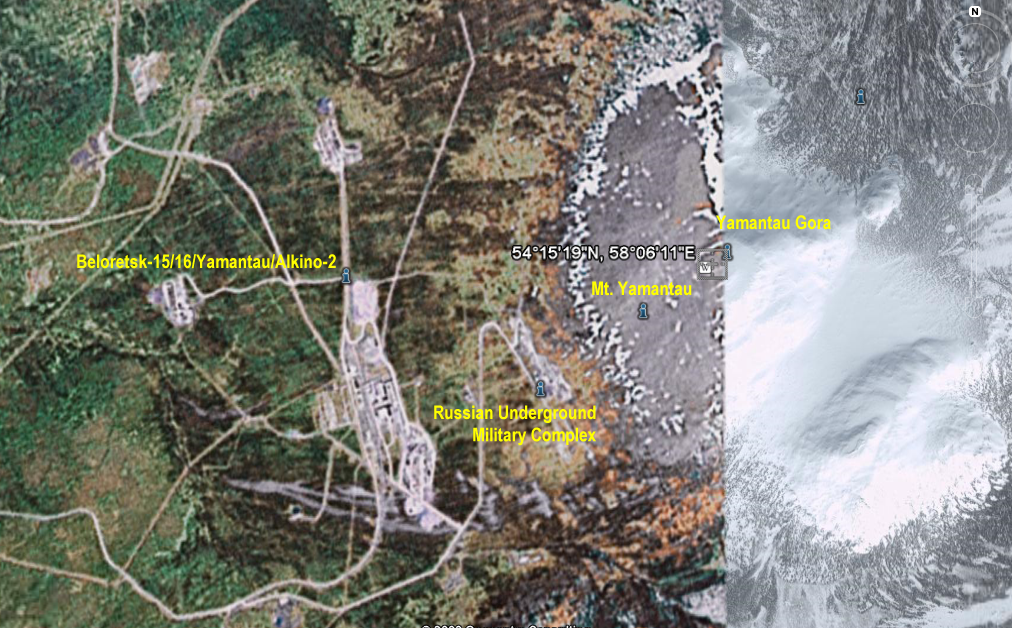 |
+54° 15' 18.00", +58° 6' 7.20"
....
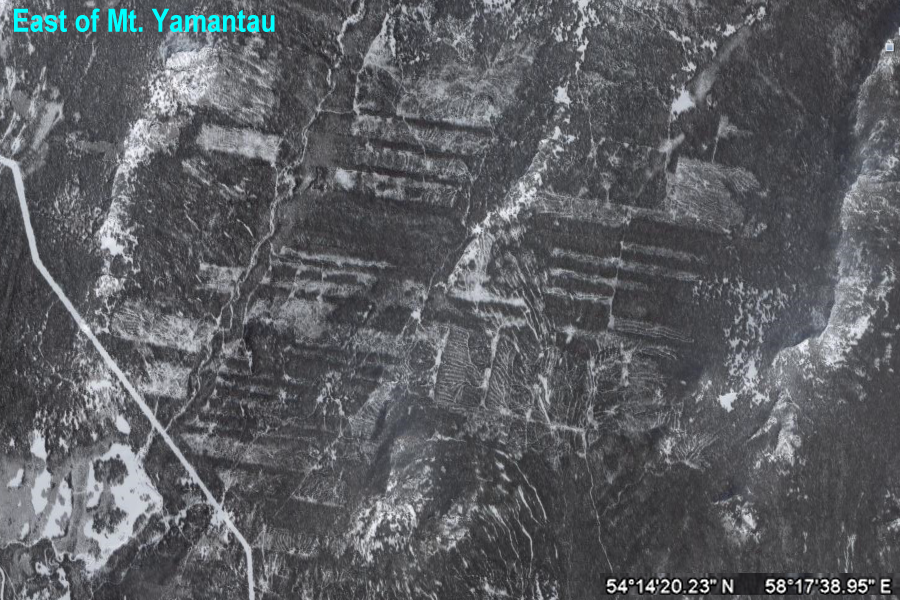 |
+54° 14' 20.23", +58° 17' 38.95"
....
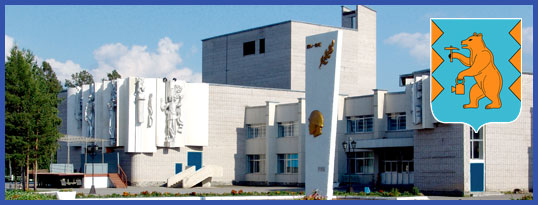 |
Official website of Mezhgore - in Russian
CONTACT INFORMATION
24.01.2007
Address of the administration: 453571, g. To Mezhgore,
ul of the 40- years of victory, 58
Telephone/Fax: (347) 273-86-09
..
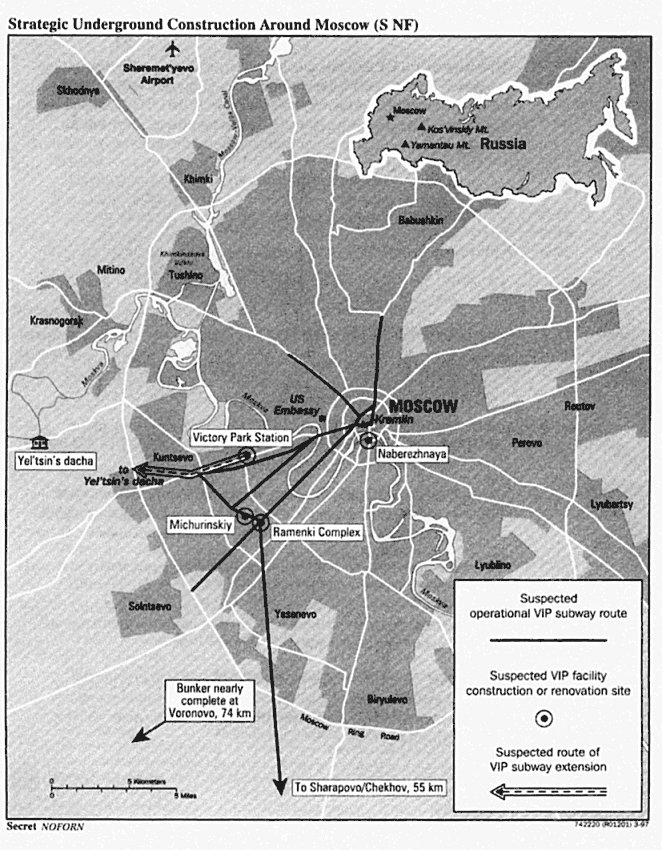 |
The Washington Times April
1, 1997, Tuesday
Moscow builds bunkers against
nuclear attack;
Subway to Yeltsin house in works
Bill Gertz
Russia is continuing a Cold War-era program to build deep underground bunkers, subways and command posts to help Moscow's leaders flee the capital and survive a nuclear attack, The Washington Times has learned. Among the ambitious projects: a secret subway being built directly to the residence of Russian President Boris Yeltsin outside Moscow. "The underground construction appears larger than previously assessed," a CIA report labeled "top secret" reported two weeks ago. "Three decrees last year on an emergency planning authority under Yeltsin with oversight of underground facility construction suggest that the purpose of the Moscow-area projects is to maintain continuity of leadership during nuclear war."
A copy of the report was obtained by The Washington Times from defense sources. A CIA spokesman declined to comment. Disclosure of the secret multibillion-dollar construction program comes less than two weeks after President Clinton and Mr. Yeltsin agreed in Helsinki to extend the deadline for nuclear arms cuts under the START II treaty because of Russian concerns over "dismantlement costs."
U.S. officials said the Russian spending on strategic
defenses, coupled with ongoing procurement of new strategic missiles and
submarines, raises questions about Moscow's claims not to have funds needed
to carry out START II reductions. The outlays also raise new worries among
some U.S. officials about whether U.S. aid to Russia is allowing Moscow
to spend its money on building new strategic forces and facilities. "How
can the United States be so gullible to accept Russian claims that it doesn't
have the money to comply with START II when it's made the decision to modernize
its forces and build these underground facilities?" asked one U.S. government
defense official.
According to the CIA report, construction work is
continuing on a "nuclear-survivable, strategic command post at Kosvinsky
Mountain," located deep in the Ural Mountains about 850 miles east of Moscow.
Satellite photographs of Yamantau Mountain, also located about 850 miles
east of Moscow in the Urals near the town of Beloretsk, show continued
digging at the "deep underground complex" and new construction at each
of the site's above-ground support areas, the CIA stated. Yamantau Mountain
means "Evil Mountain" in the local Bashkir langauge.
"The command post at Kosvinsky appears to provide
the Russians with the means to retaliate against a nuclear attack," the
CIA report said. "The rationale for the Yamantau complex is unclear." According
to the CIA report, the Russians are building or renovating four complexes
within Moscow that would be used to house senior Russian government leaders
during a nuclear strike.
A map published in the report showed new subway construction under way from Victory Park Station in Moscow to Mr. Yeltsin's dacha, some 13 miles west of the Kremlin and about four miles from the Moscow Ring Road. Additionally, the CIA report stated that a bunker for Russian leaders at Voronovo, about 46 miles south of Moscow, is nearly complete. A second bunker located at Sharapovo, some 34 miles from Moscow, has a special underground subway running directly to it. The subway system for Russian leaders allows for "rapid evacuation of leaders during wartime from Moscow," the CIA said. Presumably, the leadership would then be flown to the Yamantau or Kosvinsky complexes. According to the report, Mr. Yeltsin and Prime Minister Viktor Chernomyrdin endorsed the construction of the bunkers, subways and command posts, and funding for the Yamantau facility was listed for the first time this year in the Russian federal budget.
Peter Pry, a former CIA analyst and author of a new book on Russian nuclear operations, said the continued construction of the Russian strategic defense sites is ominous and cannot be dismissed by U.S. officials as "inertia" from Cold War-era strategic policies. "It shows they take the threat of nuclear war so seriously that they're willing to spend scarce resources on it," Mr. Pry said, adding that he was not familiar with the CIA report. "These things are tying down billions of dollars in rubles that could go into other enterprises the Russians need - for example, providing housing for Russian military officers." Mr. Pry said Russian press reports say the underground facility at Yamantau Mountain covers an area as large as the Capital Beltway.
The Clinton administration has been providing hundreds
of millions of dollars in U.S. aid to Russia to help Moscow dismantle its
nuclear arsenal. Despite the aid, the CIA report shows that the Russians
are building both defensive and offensive strategic facilities and weapons,
including a new type of long-range strategic missile and a new strategic
missile submarine.
Russian Defense Minister Igor Rodionov said in February
that both the reliability and control of Russian nuclear weapons were in
question because of the deterioration of the armed forces, but Pentagon
officials have dismissed the statements as posturing by Mr. Rodionov in
a bid to boost his budget.
Mr. Pry said the Russian construction program also shows that Russian leaders do not see a diminished threat of nuclear conflict. "This is a manifestation of the Russians' continued war-fighting attitudes," Mr. Pry said. "They believe in the idea that you can survive and prevail in a nuclear conflict. These kinds of facilities are designed to survive for weeks and months."
By contrast, U.S. nuclear protective facilities have been largely shut down. The complex underneath the Greenbriar resort in Virginia was abandoned, along with another facility in Virginia known as Mount Weather, U.S. officials have said.
SOURCE: FAS.ORG
By Patricia Neill
Matrix Editor
On April 16, 1996, the New York Times reported on a mysterious military base being constructed in Russia: "In a secret project reminiscent of the chilliest days of the Cold War, Russia is building a mammoth underground military complex in the Ural Mountains, Western officials and Russian witnesses say. Hidden inside Yamantau mountain in the Beloretsk area of the southern Urals, the project involved the creation of a huge complex, served by a railroad, a highway, and thousands of workers."
The New York Times article quotes Russian officials describing the underground compound variously as a mining site, a repository for Russian treasures, a food storage area, and a bunker for Russia's leaders in case of nuclear war.
It would seem that the Russian Parliament knows as little about Russian underground bases as the Congress knows about Mount Weather in the United States. "The (Russian) Defense Ministry declined to say whether Parliament has been informed about the details of the project, like its purpose and cost, saying only that it receives necessary military information," according to the New York Times.
"We can't say with confidence what the purpose is, and the Russians are not very interested in having us go in there," a senior American official said in Washington. "It is being built on a huge scale and involves a major investment of resources. The investments are being made at a time when the Russians are complaining they do not have the resources to do things pertaining to arms control."
Where's the Money Coming From?
The construction of the vast underground complex in Russia may very well become a cause of concern to the Clinton Administration. The issue of ultimate purpose for the complex, whether defensive (as with Mount Weather) or offensive (such as an underground weapons factory) is not the only issue Mr. Clinton has to worry about.
The real cause for concern is that the US is currently sending hundreds of millions of dollars to Russia, supposedly to help that country dismantle old nuclear weapons. Meanwhile, the Russian parliament has been complaining to Yeltsin that it cannot pay $250 million in back wages owed to its workers at the same time that it is spending money to comply with new strategic arms reduction treaties.
Aviation Week and Space Technology reported that "It seems the nearly $30 billion a year spent on intelligence hasn't answered the question of what the Russians are up to at Yamantau Mountain in the Urals. The huge underground complex being built there has been the object of U.S. interest since 1992. 'We don't know exactly what it is,' says Ashton Carter, the Pentagon's international security mogul. The facility is not operational, and the Russians have offered 'nonspecific reassurances' that it poses no threat to the U.S."
U.S. law states that the Administration must certify to Congress that any money sent to Russia is used to disarm its nuclear weapons. However, is that the case? If the Russian parliament is complaining of a shortage of funds for nuclear disarmament, then how can Russia afford to build the Yamantau complex?
Are the Russians building an underground city akin to Mount Weather with American taxpayer's money? Could American funds be subsidizing a Russian weapons factory? Hopefully Congress will get a firm answer to these questions before authorizing further funding to Russian military projects.
(c) Copyright 1996 ParaScope, Inc.
SOURCE: http://www.think-aboutit.com/Underground/mount_weathers_russian_twin.htm
Mount Yamantaw (Russian: гора Ямантау) is in the Ural Mountains, Bashkortostan, Russia. The name means bad mountain in Bashkir language. It is also known as Mount Yamantau. It is suspected by the United States of being a large secret nuclear facility and/or bunker.
Large excavation projects have been observed by U.S. satellite imagery as recently as the late 1990s, after the fall of the Soviet Union. Two cities Beloretsk-15 and Beloretsk-16, are built on top of the facility, and possibly a third, Alkino-2, as well. They are said to house 30,000 workers each. Repeated U.S. questions have yielded twelve different responses from the Russian government regarding Mount Yamantaw. They have said it is a mining site, a repository for Russian treasures, a food storage area, and a bunker for leaders in case of nuclear war.
The facility is designed to withstand up to six direct thermonuclear hits in the event of an attack. Large rail lines run into and out of the mountain. It is rumored that a direct private subway line from Moscow has been constructed to Mount Yamantaw, for the transportation of government officials and others who would be useful in a post-nuclear environment, such as nuclear scientists. This line would be over 800 mi long. In the event of nuclear war, scientists at Mount Yamantaw would be able to construct and launch new nuclear weapons, a key part of the former Soviet Union's nuclear strategy.
Mount Yamantaw is near one of Russia's last remaining nuclear labs, Chelyabinsk-70, raising speculation that it already houses nuclear weapons. Russian newspapers reported in 1996 that it is a part of the "Dead Hand" nuclear retaliatory command structure. Some U.S. intelligence sources say Mount Yamantaw is only one of 200 secret Russian nuclear bases upgraded over the past six years.
On a visit to Russia, former U.S. Congressman Curt Weldon (R-PA), who had been following the story since 1995, asked about the mountain. "I went to Moscow and spoke with the deputy interior minister who was in charge of mining," Weldon said. "I asked him if there was any mining activity there. He just shook his head and said he had never heard of it. So I mentioned the other name the Russians use for it: Mezhgorye (Russian: Межгорье). He said he hadn't heard of that either. Then he sent an aide out to check. Twenty minutes later, the aide came back, visibly shaken. He said they couldn't say anything about it."
SOURCE: Wikipedia - Mount Yamantaw
